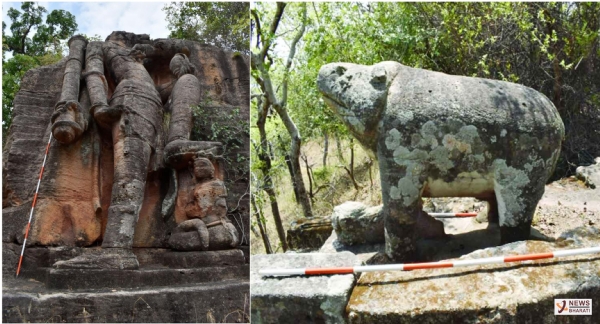Vital findings surface at ASI's recent excavation in Bandhavgarh, recoveries include largest Varaha sculpture between 2nd & 5th century CE
According to the reports of the ASI, Jabalpur Circle, a team of 10 officers and two forest officials explored the remains located in the core area of the Bandhavgarh Tiger Reserves when 26 caves were recovered for the first time.
Total Views |
Indore, Sept 29: The Archaeological Survey of India ( ASI ), Jabalpur circle, in a recent excavation has recovered more than 100 remains in the core area of the Bandhavgarh Tiger Reserves in Madhya Pradesh’s Umaria. The unique recoveries include largest Varaha sculpture dating between 2nd century CE to 15th century CE, making the excavation a landmark in India's Archaeological history. It is to be noted that the archaeological site of Bandhavgarh is an old site, first excavated in 1938. However, the recent findings have been the most significant ones till date.

According to the reports of the ASI, Jabalpur Circle, a team of 10 officers and two forest officials explored the remains located in the core area of the Bandhavgarh Tiger Reserves when 26 caves were recovered for the first time. The excavation took place between May 20 and Jun 27, this year. As a preliminary observation most of the 26 caves recovered were noted to be Buddhist in their architectural nature. ASI, Jabalpur circle, Superintending Archaeologist, Dr Shivakant Bajpai, who led the exploration said, “This is an important exploration and documentation to know about the rich culture of Baghelkhand." He further added, "A large Varaha sculpture measuring 6.4x5.03x2.77 metre of 9th –13th century CE is found. It appears to be the world’s largest sculpture."
The 26 caves that have been recovered during the excavation have been dated back to 2nd Century CE to 5th century CE. Preliminary research suggests that the caves particularly belonged to the Mahayana sect of Buddhism as the remains include chaitya shaped doors and cells containing stone beds. About the recoveries at the caves, the Superintending Archaeologist said, “The team found a Votive Stupa and a Buddhist pillar fragment containing miniature stupa carving. The votive stupas held the ashes of the monastic dead to be eternally in the presence of the Buddha Shakyamuni. These are roughly dated back to 2nd -3rd century CE."
The other findings include stone games, water filter structure, coins and inscriptions. According to ASI, 24 Brahmi inscriptions datable from 2nd century CE to 5th century CE have been found. Some have been identified similar to the remains of Gupta period like door jambs, in cave 16. The cell of cave 16 resembles typical Gupta carvings of 4th-5th century CE.
Besides, another set of 26 ancient temples and remains and 2 Saiva math of Kalachuri period, dating back to 9th century CE to 11th Century CE, have also been recovered. 46 new sculptures and 19 water bodies were also found at the site. The site also had various quarry sites and brick kiln. In the inscriptions, Kaushami, Mathura, Pavata (Parvata), Vejabharada and Sapatanaairikaa were found mentioned. These were important places during the times of the Mahajanapadas. Important Kings mentioned in the inscriptions are Maharaja Bhimsena, Maharaja Pothasiri and Maharaja Bhattadeva.

